According to the birth certificates, János Pilinszky was born at 35 Rökk Szilárd Street in the 8th District at the Budapest Midwife Training Institute. Until the age of 11, Pilinszky lived on the second floor of apartment building no. 5 at the corner of Károlyi Street and Magyar Street, right next to Károlyi Garden. The poet was eight years old when the garden became the property of the capital in 1929 and was declared a public park three years later. From the second floor window of Pilinszky's home, he could see the Károlyi Garden, his mysterious park surrounded by a stone wall, which was then rebuilt. He attended school in the area, he completed the four grade in Cukor Street, and continued his studies at the Piarist High School from September 1931. He was already preparing to be a poet during high school.
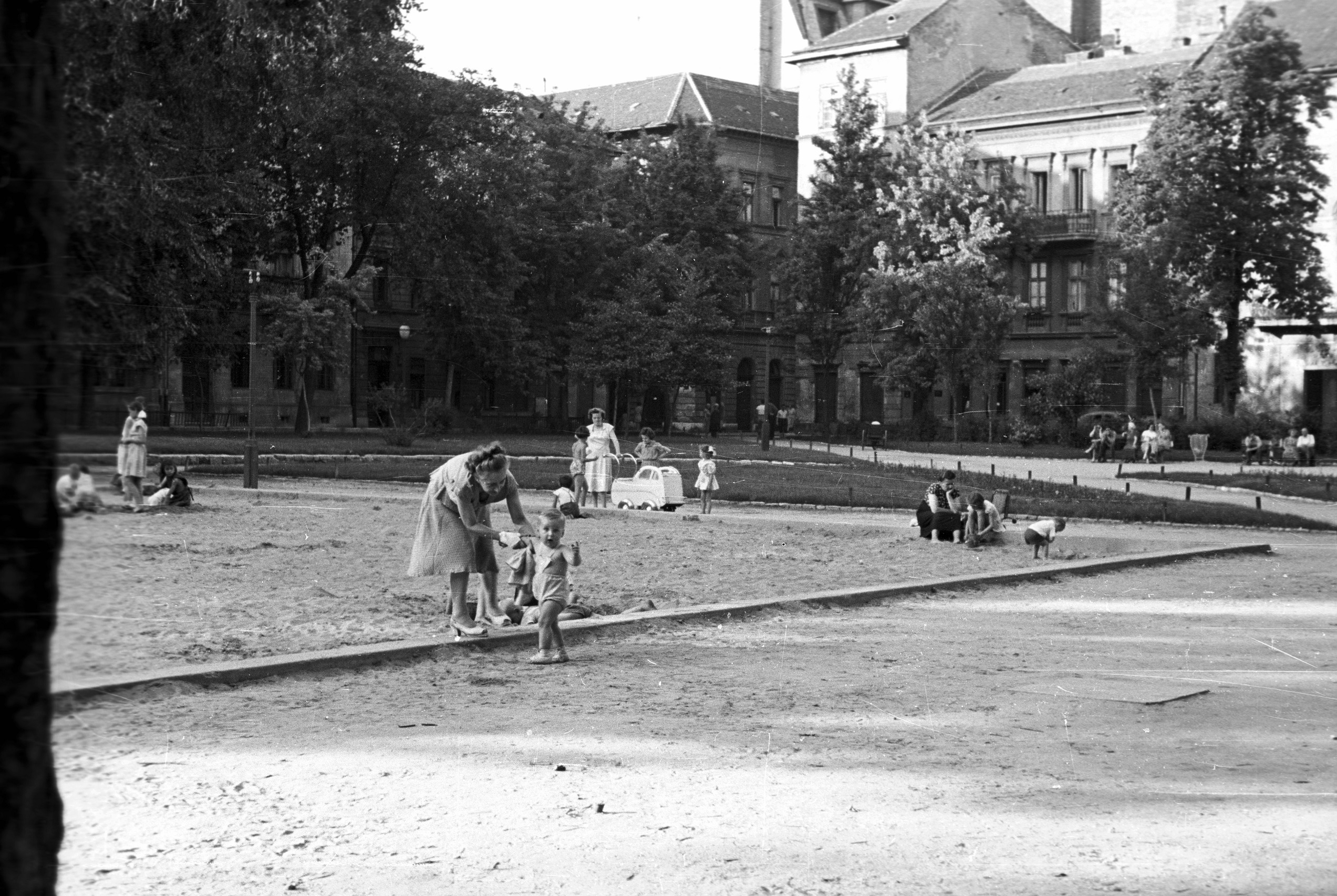
The Károlyi Garden in 1955, in the background the houses of Magyar Street and Ferenczy István Street (Photo: Fortepan/No.: 51763)
The family was constantly migrating, they lived in five different places during the eight years of high school, so they moved to 7/b Angyal Street in the 9th District, then 3 Kinizsi Street, from here they moved to 26 Kiss János Altábornagy Street in the 12th District, and from 1938, they lived at 27 Horánszky Street in the 8th District. The child in a hurry for the Advent Mass could see different faces of the city at dawn, while encountering strange, moving destinies. Tibor Tüskés writes in his book Faces and Confessions that his deep sympathy for people has developed as a result. He also lived here when his first poems appeared in the newspapers Napkelet, Élet and Vigilia from 1938 onwards.
The young Pilinszky moved to Harbach, Germany, in February 1945. The terrible world of concentration camps has defined his entire life and poetry. In the autumn of 1945, he was able to return to his hometown, Budapest, where the family moved to the abandoned apartment of a gendarmerie colonel who had fled to the west, at 17 Molnár Street in the 5th District. This street, which today shows a picture of a crowded and busy downtown area, was different in the first half of the 20th century: it was more intimate, closed and quiet. Except for the masses of people who escaped from the camps, prison camps, came up from the cellars, survived the horrors of the war, and covered the streets of Pest.

Pilinszky lived with his family in the residential house on Molnár Street between 1945 and 1962 (Photo: Balázs Both/pestbuda.hu)
The poet lived in a residential house with her family: there lived her sister with her husband and children, her two aunts, and her mother, with whom the poet had a very intimate relationship and with whom he shared a room. Although the apartment had three rooms, no one could ever be alone - the poet's nephew, Péter Kovács, recalled those periods later. They also lived here when his first volume of poetry, Trapéz és korlát, was published in May 1946. One of his masterpieces, the Apokrif, can also be linked to this place.
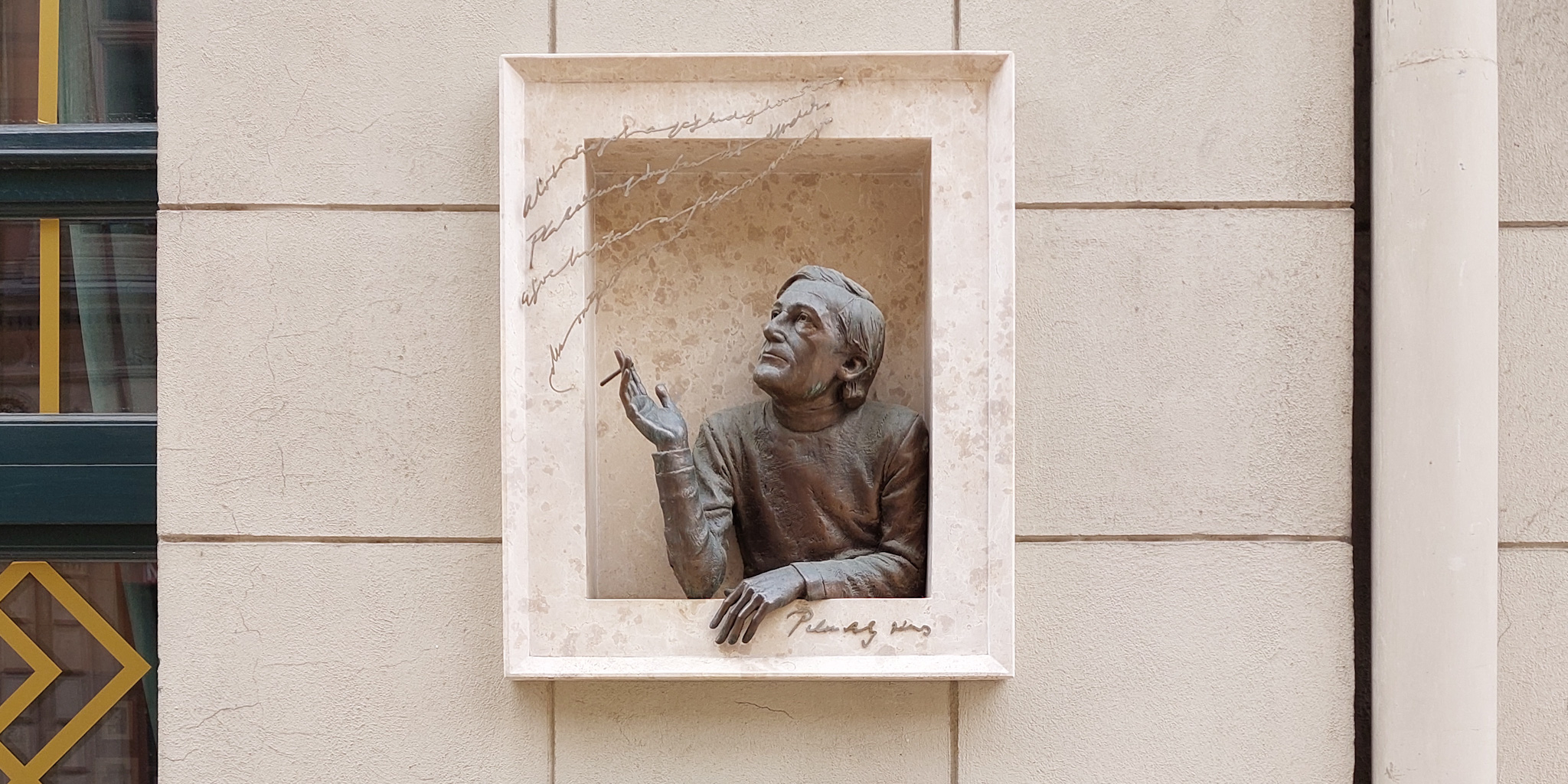
The Central Café was one of the poet’s favourite places. A memorial plaque was placed on the wall of the building in May 2018, which contains his portrait and the text of his poem Négysoros (Photo: Balázs Both/pestbuda.hu)
It was at this time that he got used to sitting in a café as a way of life, writes Balázs Lengyel, writer, art critic in his recollections. He spent much of his time in at Centrál, at Darling, but the Nárcisz bar was also an important part of his life. These dark gates, old residential houses, shops, workshops, the walks along the Danube, the merchants, the clerks, the maids doing their Sunday walks were a defining experience. "This region will be his homeland," writes Tibor Tüskés. "Even later, in the midst of so many home changes and moves, he is always attracted to this landscape, and an element of it is featured there in his poetry."
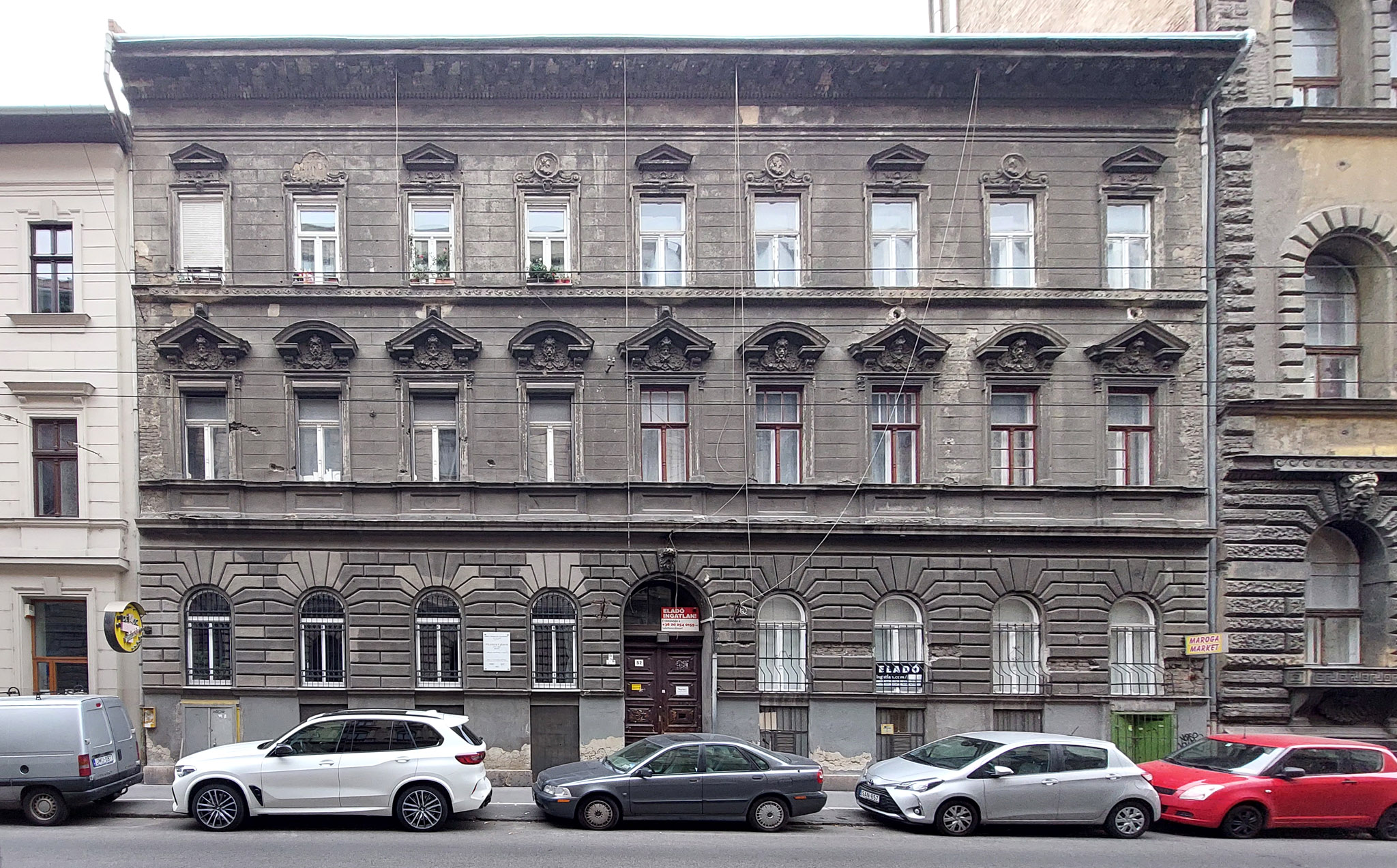
The poem Fabula can be connected to the residential house on Izabella Street (Photo: Balázs Both/pestbuda.hu)
From the 1960's, Pilinszky travelled more and more in Europe, and his art was known not only in Hungary but also internationally. He has been to Paris several times, he also went to New York. He got his first independent home, the apartment at 52 Izabella Street, in 1962. He was forty at the time. He suffered a series of family disasters during this period. Her mother, her maternal aunt, Erzsébet Baitz (in the family, Tete - she was the founder of the female branch of the Hungarian Servite order) died, and his brother-in-law soon died as well. The apartment building on Izabella Street today is extremely neglected and in poor condition. His apartment was a one-room-kitchen, courtyard apartment on the ground floor with a kitchen entrance.
A visitor wrote this about this apartment where the Rekviem was born: “The room is on the ground floor, with a window facing the courtyard. The window has a dark curtain with enriched with folds. The room is rectangular and relatively narrow. There is dark-toned furniture (…) Pilinszky is sitting at the coffee table. Dark suit, folded out white shirt. A Bach vinyl is spinning on the turntable. Dark music in sync with the room. Everything is accurate, geometric, yet something dreamy is swinging over the space and time.” He lived here until 1969, his masterpiece Fabula can also be linked here. The plaque reads a quote from his poemAranykori töredék (Fragment from the Golden Age): „Minden tetőről látni a napot” ('The sun can be seen from every rooftop') Balázs Lengyel remembered that Pilinszky was not feeling well on Izabella Street. Mainly because of the loneliness that surrounded him.
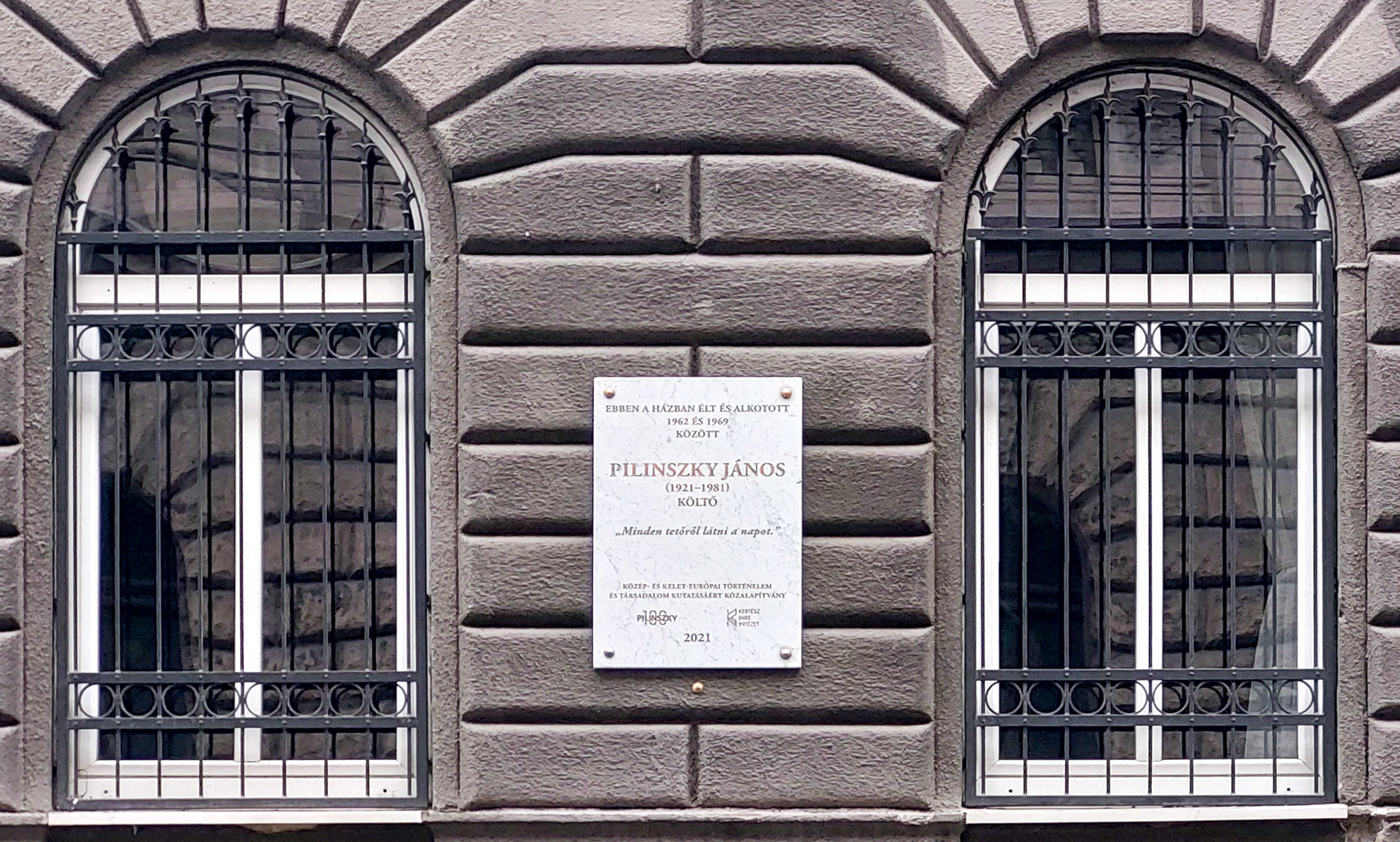
In Izabella street, he had a courtyard apartment on the ground floor, with a kitchen entrance (Photo: Balázs Both/pestbuda.hu)
In 1969 he moved to the originally three-storey, historicist-style residential house in the 6th District at 42 Hajós Street - 1 Paulay Ede Street, which was built in 1882-83 by György Hubala and Sándor Wagner according to the plans of architect Küschenbaum. The fourth floor was built on it in 1922. It is clear from Pilinszky's story that his two elderly aunts, Bébi and Mária, who could not get along with each other, lived with him, and their conflicts constantly brought unrest within the walls of the house. In the heat of controversy, they regularly broke into Pilinszky's room and demanded that justice be done between them. It is not exactly an ideal condition for a poet, but he did not like to live alone.
Pilinszky described his apartment in a portrait film made by Hungarian Television as follows:
“My room is narrow and small. I do not collect anything, not even books or records. Almost every picture on the walls has a personal story, the most valuable of which is undoubtedly the two Mednyánszky paintings. Both are detailed drawings, I inherited both. This is my favourite lamp. I bought it even when I was going to buy a farmhouse. I have known since then that I will never have a house, but I hope this beautiful white light stays with me and does not break.”
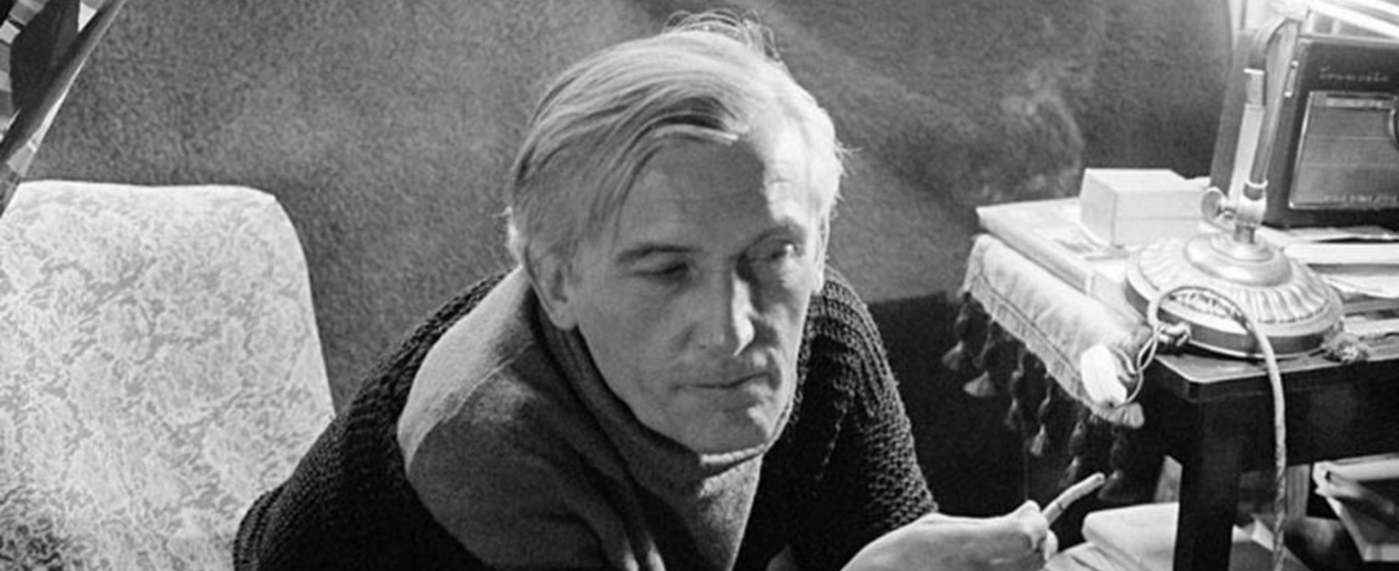
János Pilinszky at his home at 1 Hajós Street on 1 March 1980 (Photo: MTI/Edit Molnár)
He lived here when his collection of Nagyvárosi ikonok ('Metropolitan Icons') was published in 1970. From then on, he was considered one of the most important representatives of Hungarian literary life. His overseas appearances have also multiplied, spending more or less time in Paris each year. He was basically prone to depression, he was ill, feverish, meaningless accidents had happened to him, such as his left hand paralysed after falling asleep in his armchair and squeezing a nerve in his arm. He took on fewer and fewer public appearances, spending his time in Velem, a village in Vas County, and in Székesfehérvár, near his nephew and his family, where he rented a small flat in a housing estate. In May 1981, he came to Budapest for only a few days when he became ill and was taken to the Kútvölgyi Hospital, where he died on 27 May.
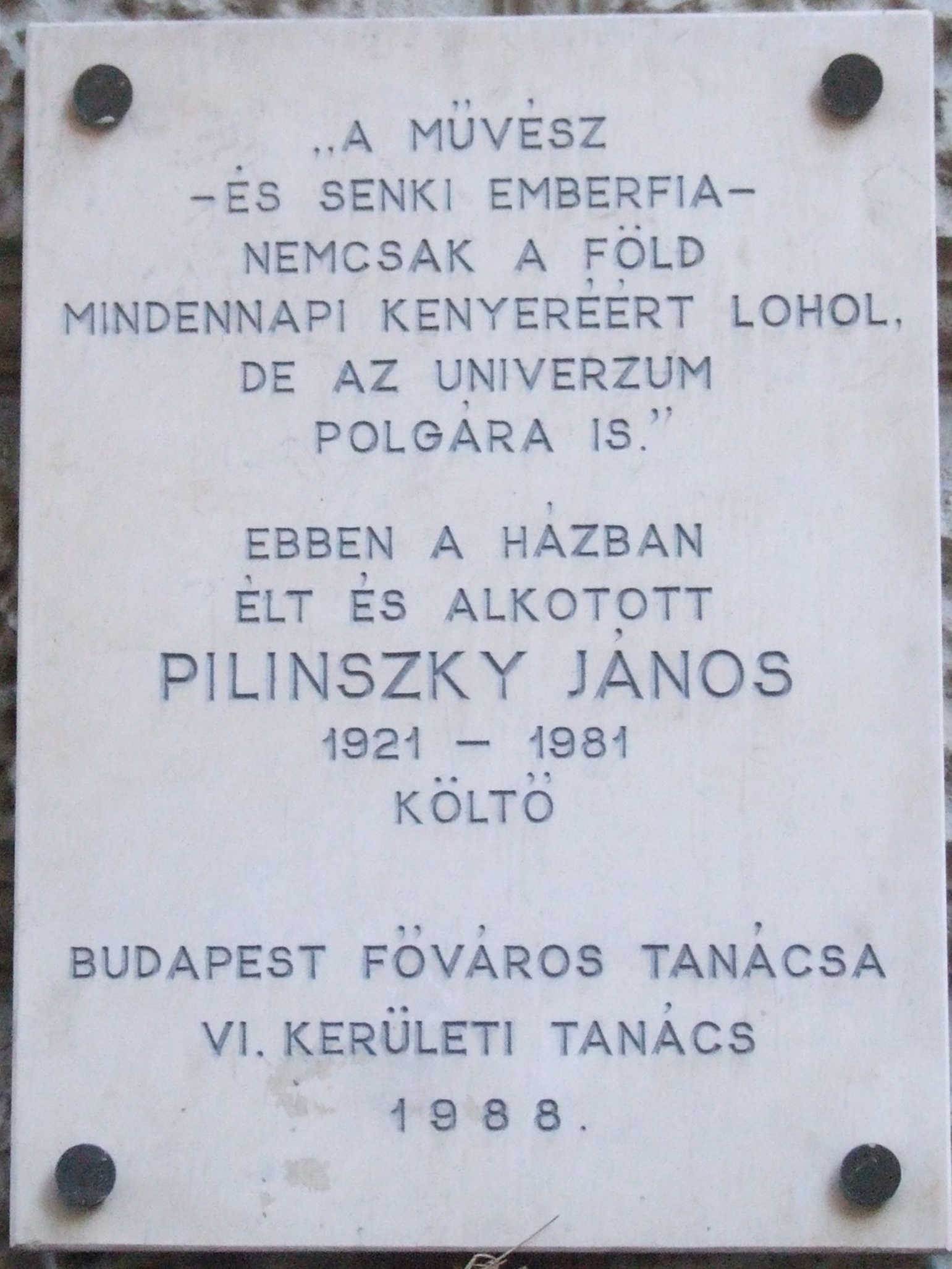
Memorial plaque on the wall of the house at 1 Hajós Street (Photo: Wikipedia)
Pilinszky wrote about winter in Budapest in December 1942. Its lines evoke ancient times:
“The night arrived unnoticed, as if someone had stealthily drawn around the houses, the walls, the window sills separating from the dark with white chalk. The surrounding towers of the Fisherman's Bastion stand on the edge of the ash-coloured sky, and the bridges seem to descend from their weight over the lead-coloured Danube. (…) The bell ringing rises from the Pauline monastery with difficulty, and freezes into the air; the trams ring dense, and a lively carousel of skaters starts early on the adjacent ice rink…”
Cover photo: The monument of János Pilinszky on the wall of the Central Café (Photo: Balázs Both/pestbuda.hu)

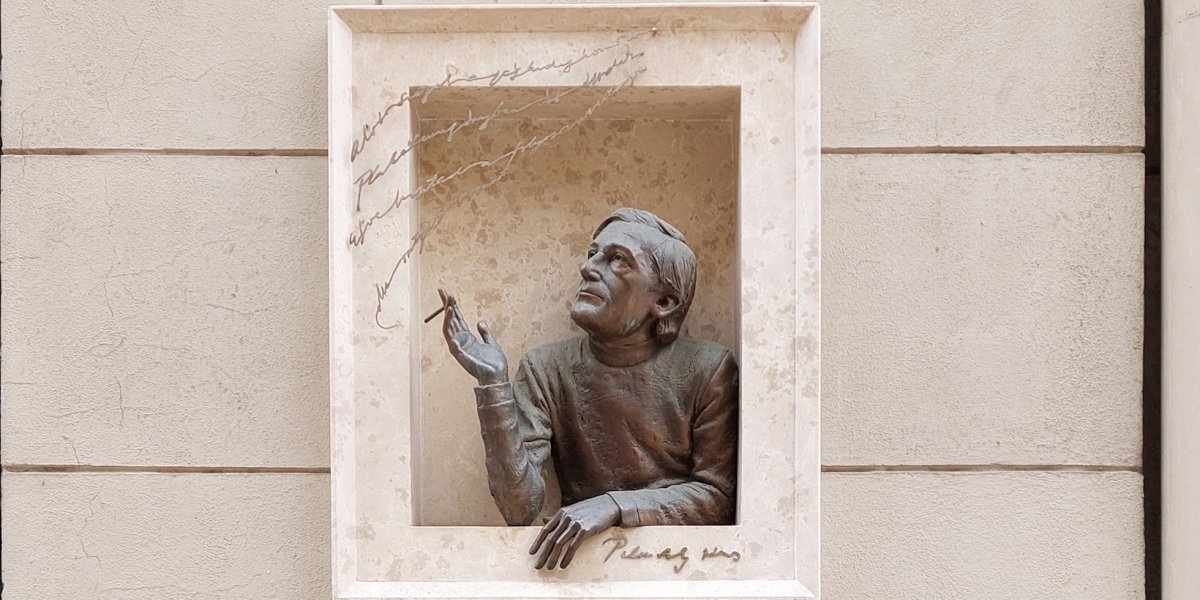
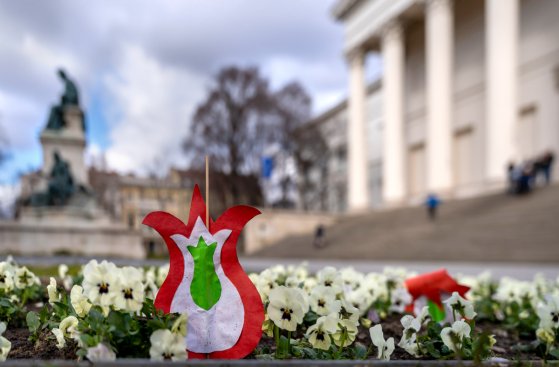

































Hozzászólások
Log in or register to comment!
Login Registration